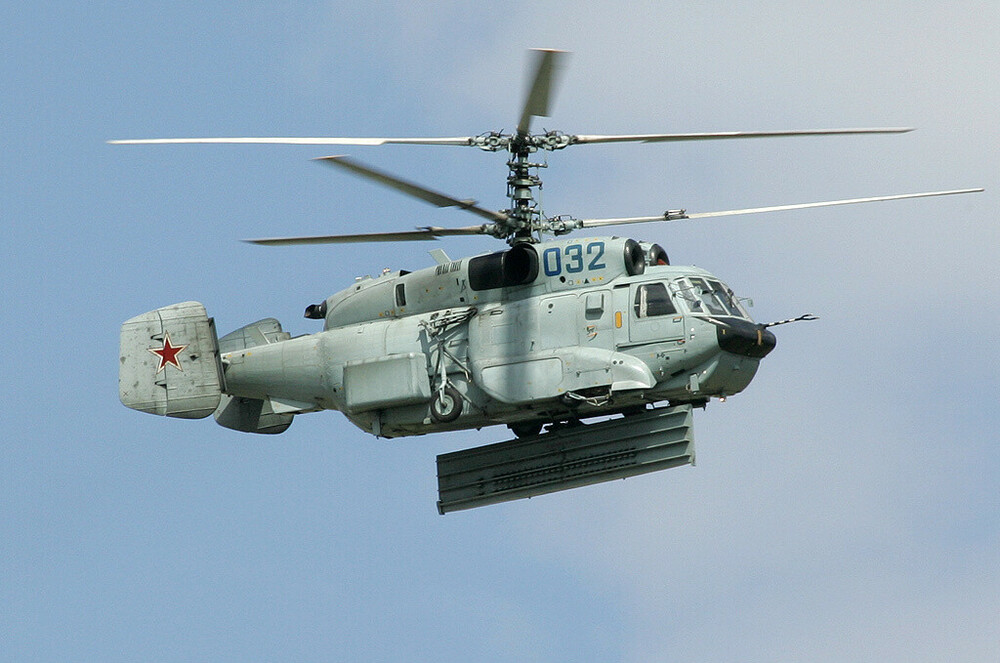Leaderboard
Popular Content
Showing content with the highest reputation on 12/14/23 in all areas
-
14 points
-
Howdy folks, I created a new weather mod to give us a little more variety in what we have currently. Hopefully you enjoy this while we wait for ED to give us a proper update to the weather system. This Weather mod includes the following features: 38 new weather presets for scattered showers, overcast/rain, stratus clouds, cumulus clouds, altostratus and altocumulus clouds. Cloud base altitude and thickness limits increased for all presets Fog visibility and thickness limits increased so you can create hazy atmosphere affects Six new density settings tweaked for scattered and isolated thunderstorms Rain and Thunderstorms precipitation now available for all cloud density settings Installation: Recommended: Use OvGME or other mod manager and install to DCS root directory. Make a backup if installing manually! To create thunderstorms: 1.) Select NOTHING from the Clouds Preset menu 2.) Configure the base altitude as desired 3.) Adjust the thickness to something between 15000-30000ft 4.) You can choose any density setting but I added six new ones. Density 11 - 16 are tweaked for thunderstorms 5.) Choose Thunderstorm or Rain from the Precptns option 6.) I recommend adding a lot of wind and turbulence as well 7.) Experiment with settings to get the look you want and enjoy! Download: https://www.digitalcombatsimulator.com/en/files/3335023/ Legacy and LOW RES versions: https://drive.google.com/drive/folders/1jEVEdgFXQAVfvUsUMLnOiC4RaUGxEaA5?usp=sharing 8/26/2025 - Updated to version 1.9 - ALL NEW cirrus cloud textures - 20 unique highly detailed cirrus, cirrostratus and cirrocumulus variations - New shader code insures a different cirrus texture loaded with each mission reload for better variety. - Shader "patch mask" helps break up repeativness, adding gaps of clear sky between areas of cirrus - Moon size increased - Star size decreased back to default - New LOW RES version available for people using VR or lower end PC. (see link below for download) https://drive.google.com/drive/folders/1jEVEdgFXQAVfvUsUMLnOiC4RaUGxEaA5?usp=sharing ***If you downloaded 1.8 on August 12-14th, download 1.8.1 or upgrade to v1.9 for the fix. There was a bug causing long loading times. Also recommended to clear your shader cache Saved Games\DCS\fxo and metashaders2 folders. 8/14/2025 - *HOTFIX* Updated to version 1.8.1 - Fixed excessive shader cache generation and long load times. 8/12/2025 - Updated to version 1.8 ** Continued work the improve the cirrus cloud texture and shader - New and improved cirrus cloud textures - Cirrus clouds now change float direction over time - New beautiful seamless transitions between different sets of cirrus clouds - Cirrus looks better at all distances - Boosted star light for better night sky 7/1/2025 - Updated to version 17 -NEW: Modded cirrus shader to use a texture array. This increased the number of unique cirrus cloud types from 4 to 16. You will notice many new variations of cirrus while flying your missions now. All cirrus textures were created by me from hi resolution photos of real cirrus clouds. -Tweaked several cloud presets, improving the look of Low level stratus, Altostratus and Altocumulus cloud presets - Included 4 new presets for heavy broken cumulus clouds. These are the Scattered Showers presets with no rain. 3/28/2025 - Updated to version 16 -Updated files for compatibility with DCS version DCS 2.9.14.8394 -Updated cirrus shader for a much more natural random look. Cirrus clouds will no longer cover the entire sky over the map and will appear in random patches. -Changed cirrus cloud fade interval to 30 minutes. The cirrus layer will fade in/out over a 30 minute period. Previously this was set very high to 24 hours so the cirrus clouds were basically static. -Added [Bandit648] tag to Scattered Thunderstorms 1 and Scattered Thunderstorms 2 cloud presets. 12/24/2024 - Updated to version 15 -Updated files for compatibilty wit DCS version 2.9.11.4686 12/17/2024 - Updated to version 14 -Added new cirrus cloud texture -Added two new cloud presets for Scattered Thunderstorms *note: thunder and lightning are not currently working on these presets -Updated METAR codes for all of the mod cloud presets 12/04/2024 - Updated to version 13 -Updated for compatibility with DCS 2.9.10.3948 10/30/2024 - Updated to version 12 -Minor update of files for compatibility with DCS 2.9.9.2280 10/11/2024 - Updated to version 11 - Updated cloud preset thumbnails. The Mod thumbnails are now outlined in yellow for better visibility. Thanks to forum user ggrewe for help with this. - Fixed issue with cloud presets being out of order 7/11/2024 - Updated to version 10 - Updated for DCS 2.9.6 compatibility. - Cirrus cloud textures updated 6/17/2024 - Update to version 9 - New cirrus cloud textures added! 5/23/2024 - Update to version 8 - compatibility for latest DCS version 2.9.5.55300 - updated cirrus layer 2/24/2024 - Update to version 7 - NEW cirrus cloud textures - Cirrus clouds now move and can be seen moving - Cirrus clouds don't fade in and out any longer. They don't change for 24 hours - Tuning and tweaks to several presets - Updated config files for compatibility with DCS 2.9.3.51704 **The cirrus cloud behavior and appearance are drastically changed in this update. There are 4 cirrus cloud textures and they usually are blended with each other, creating a variety of different looking skies. After loading a mission, if you want to change the look of the cirrus clouds simply re-load the mission by pressing SHIFT-R. Sometimes changing the date and/or time in the mission editor changes up the cirrus also. If you want to turn off cirrus clouds completely you can edit \Bazar\shaders\enlight\cirrus.fx in the MOD folder. Change line 36 in that file to: static const float cirrusThickness = 0; Make sure to disable/re-enable the mod in OVGME after making the change. If you think the new cirrus sucks and you want to go back to default delete the following files from the MOD folder and disable/re-enable in OVGME: \Bazar\shaders\enlight\cirrus.fx \Bazar\Effects\EffectTextures.zip Enjoy! 1/27/2024 - Updated to version 6 - Fixed small issues in several presets - Reworked "Scattered Showers 5" preset. Looks much better now - Minor adjustments to "Low Level Stratus 5" and "Nimbostratus with heavy rain". Clouds have a slightly softer look now. 1/24/2024 - Updated to version 5 - High level cirro clouds are back with cirrostratus and cirrocumulus presets! - 10 new cloud presets added - Many tweaks and adjustments to existing presets 1/11/2024 - Updated to version 4 - 2 new stratus cloud presets added - 3 new altostratus cloud presets added - 3 new altocumulus clouds presets added - Re-enabled default cirrus layer and lowered opacity. 1/9/2024 - Weather mod v3 update changes: - 5 new presets added - 2 new cloud types, cirrus and altostratus - Improved stratus cloud presets - Added preview thumbnails for all weather mod presets - Disabled default cirrus layer - Adjusted base altitude settings for all mod presets 1/6/2024 - Weather mod v2 update changes: -Reverted "Broken 2" preset back to default setting -Added 13 new presets! New presets include new overcast/rainy, scattered cumulus and low level stratus clouds. Make sure to adjust your cloud base height as needed with the new presets. The Scattered cumulus look best at low to mid level (2000 - 15000ft). Their base height dramatically changes the look. Status should be se t with base height very low (0 - 3000ft).8 points
-
Id say, as with many jets, it's easy to get into, but difficult to master. Back in the days, a lot of things haven't been very fleshed out yet and a lot of stuff was still in the process of being refined for better usability. As a direct result, the cockpit panel layout appears a bit weird in some places and the responsibilities between Pilot and WSO are not always split well yet. Also, a lot of weapon delivery modes or systems are not very intuitive yet (compared to intuitive CCIP/CCRP symbology that we have nowadays). It is easy to startup, easy to taxi, takeoff, fly around for fun and bring it back without exploding. Doing that in a controlled way however, as required for combat or other things, is difficult. The control authority and responsiveness varies a lot depending on the situation you are in, leading to confusion and surprises to untrained pilots. You will have to learn how to read her feedback and what configurations you want to avoid. General navigation is straightforward. You can set (up to 2) waypoints via coordinate entry and navigate there with your HSI. You also have a standard TACAN, ADF and VOR system for getting from A to B. The radar doesnt have a lot of switches and modes, so it's easy to get started with. The challenge is interpreting the returns and dealing with its limitations of being easier to break in some situations. Weapon delivery is a two sides journey. Some stuff is easy to use, such as Mavericks or a dive toss bombing on a TGP target. The complex things are mostly secondary modes, such as manual bombing. You have a lot of options to choose from when it comes to dropping a bomb in different modes and each of them needs a slightly different setup and slightly different things to be entered in to the computer. Also, these modes require you to accurately fly a setup config (speed, altitude, angle) to be precise - which is difficult without assistance and not having a modern HUD that shows your values in plain sight. It will be fun to learn, but in practice not a lot of users will use it on a daily base and instead rely on the simpler bread and butter methods. The targeting pod is a challenge to use, because it requires a lot of coordination between Pilot and WSO. The WSO will frequently get lost, because (only god knows why) only the pilot has an indicator telling where the pod is looking at. The WSO has to tell the pilot when he wants to track something, so that the Pilot stops maneuvering (else the WSO will lose sight). Likewise, the Pilot has to warn the WSO before maneuvering, else the WSO will overcorrect and get lost. In any case, it's a very fun plane to fly with a lot of things to discover :)8 points
-
In this DCS: F-16C Viper video, we’ll review the new features coming the Viper. These include Laser Spot Search, or LSS, and Laser Spot Track, or LST functionality for the targeting pod, or TGP; the Control page for the targeting pod, the Freeze function for the Horizontal Situation Display, or HSD, page; and the addition of new Viper weapons; and changes to AIM-9 functionality. Let’s get started. NOTE 1. Apologies for the audible breathing. I have a cold and am congested, but I believe better to create a video to explain these new features. NOTE 2: As always, these videos provide a preview of an upcoming feature to assist you in understanding a new feature. Later, it is quite possible that the feature will change, and the feature functionality has changed. As much as I’d like to, I lack the time re-record these videos. First, let’s look at Laser Spot Search, or LSS, and Laser Spot Track, or LST. As you might imagine, we’ll be using this to allow the targeting pod to search for specific laser Pulse Repetition Frequency, or PRF, and then be able to track it. The laser designation source could be a JTAC or another aircraft. Why would you want to use this method? Primarily if you require very specific targeting that only an external source can provide, for example, like having eyes on. From the Instrument Control Panel, or ICP, select the LIST button, then zero for miscellaneous on the keypad, and then 5 for Laser. On the laser page, we see the laser PRF that our targeting pod will lase with, and the laser PRF code that it will search for. It defaults to 1688 and we’ll use that. Note that a laser code must be an octal, meaning, only digits 0 to 8. Because we’ll be using an external laser-designation source, we’ll contact the JTAC and ask for laser designation of the target. At waypoint 2 is a target array, where the target is located. Let’s enable the TGP by bringing up on the left MPD and make it our SOI, this should be old hat by now. Note that at the top of the left side we see our LSS code of 1688. To start the LSS operation, press the Cage/Uncage button your throttle or press the LSS OSB. Once the laser code is detected, the Laser Spot Track, or LST, is transitioned from an LSS. We can now Target Management Switch forward to designate that location as our Senor Point of Interest and now conduct a standard CCRP laser-guided bombing attack. While we are here on the targeting pod page, we can now select the CNTL OSB to display the Control page. From the control page, we can elect to display the gray scale to calibrate the TGP display, and we can enable or disable coordinates, north arrow, and yard stick distance by pressing the N/M OSB. For this update, we’ve also added the Freeze (FZ) function to the Horizontal Situation Display, or HSD. It behaves differently if the HSD is SOI or not. If SOI, indicated by the box around the periphery of the display, pressing the freeze OSB sets the HSD to the centered format and ground stabilizes the HSD cursor at its location. If the HSD is not the SOI and freeze is selected, it will again center the HSD but instead ground stabilize on the ownship’s current location on the HSD. When in freeze mode, expand is disabled and steerpoints 1 to 99 are frozen. In this update, we’ve also added some new weapons. These include the LAU-68 and LAU-131 rocket pods for Hydra unguided rockets and both the AIM-9P3 and AIM-9P5 Sidewinder air-to-air missiles.6 points
-
5 points
-
Nothing relevant has changed here. The Tomcat flies as nicely as she always did. Of course, when you flew things like M2000 or Hornet much lately, it may be pretty rough to re-adjust. My advice, give it time, adjust your curves if necessary and practice. Eventually it will click in place again. ...unless you just want to flame.5 points
-
5 points
-
Hey guys, Sorry for such a long time between posts. I've been booted from my office since we found out there's going to be a new addition to the family (hopefully he/she is ready to learn the RIO because I'm not backseating to a baby). I'm finally back up and running and have posted the files here, and will hopefully be uploading the build video before Christmas. The files will also be published on Thingiverse but I have to wait 24 hours before I can upload. Merry Christmas!4 points
-
4 points
-
4 points
-
I would actually expand on that slightly and ask that any military installations on the map including all helipads were somehow marked on the map to find them easily.3 points
-
in my opinion this is wrong, since you can have a hostile track without 2 factor being needed from your ownship. Real manuals even offer an example of this. You only need 2 factor if you want to change ROE to hostile, from other classifications. But not the opposite, when it's already Hostile on the HSD. Waiting for ED to acknowledge this issue3 points
-
Im sorry you are not happy, but at no point have you not been able to use the F-16 which is still in early access and active development. The will always be bugs and tweaks to be made during development, the complexity of what we are doing can not be under estimated. I totally understand if you are not suited to the way early access has to be done, or the length of time it takes, without this process we would not be able to bring these modules to you all. We spend thousands of man hours developing the DCS F-16C and will continue to, your support during early access makes this work possible. thank you3 points
-
I once ( 2015) stubled up that text on the internet. Seems like in hindsight it was our beloved C.W aka Mover who wrote it: http://fightersweep.com/1494/hornet-vs-viper-part-one/ http://fightersweep.com/1539/hornet-vs-viper-part-two/ http://fightersweep.com/1904/hornet-vs-viper-part-three/ http://fightersweep.com/2378/hornet-vs-viper-part-four/ In DCS the F18 is less demanding, more forgiving. Even the over all size of the letters in the cockpit and the MFDs are bigger and better readable which is a statement how it was designed.3 points
-
RAZBAM F-15E Updated Flight Manual. https://www.digitalcombatsimulator.com/upload/iblock/650/yrfs3pg11jh6bxwv03jp4oveaqhvs4z1/DCS_F-15E_Flight_Manual_EN.pdf3 points
-
Try to fly one of Baltic's Raven One campaigns to the end and then come back and tell us that the Hornet is boring...3 points
-
I like air superiority missions ( No A2A combat, I suck at it ) with a ground attack focus, I generally fly coop mission in multiplayer with friends which is how I like to play.3 points
-
3 points
-
G'day guys! We know that you've been itching to find out more, so this report will be purely focused on the development state of the A-7E Corsair II for DCS World. The SLUF has an all new, much improved 3D model and today we're happy to be sharing the first pictures of the new model in-sim! First, I must apologize for the lengthy gap between development updates. We understand that many of you are keen for more regular update reports, and I will strive to do my best going forward to try and keep the development news flowing through more regularly. Without further ado, let's dive into what we've been up to in 2023! ARTWORK 2023 has been a wild ride for our beloved Corsair; with some difficult decisions being made throughout the year. In our previous report, we unveiled our overhauled and remade 3D model in all of its beauty. The model was exquisitely detailed, and we were very proud of it (and still are) - especially considering the model was built from only photos and blueprints. In 2023, we recruited a new artist, Oleg, who is a veteran of the industry & aircraft modelling, having worked previously with some of the very best teams in Flight Simulation. Not only an incredible 3D artist, Oleg has extensive experience with photogrammetry; the fascinating process of extracting a 3D model from a real-world object via a detailed photography process. This presented us with a unique opportunity to do something we've never done before - scan an entire aircraft as the basis of our model. After being presented with this opportunity, we made the very difficult decision to remake the 3D model AGAIN. Now I know what you're thinking, and don't worry - this decision hasn't had any effect on our release projections; there is still plenty of more programming work to be done in tandem. Of course, this decision was very painful for us, having to set aside thousands of hours of work is not a decision to be made lightly. Ultimately though, we believe that this was the best decision going forward for the team, for the module and for the consumer. Our previous model was excellent, however any model built from blueprints & photos is prone to inaccuracies, as minor as they may be. This is just the nature of dealing with wild blueprint inaccuracies, incomplete photo reference and managing strange photo perspectives and alignment. Photogrammetry eliminates these errors and inaccuracies, providing a true-to-life 3D reference of the model and textures. The external model has progressed at an incredible pace thanks to the photogrammetry, and soon work will begin on the cockpit remodel. Now that the new model has been in development for some time, we are absolutely confident that we made the right decision, and we think that these screenshots might just convince you too Note that the textures here are using the scan reprojection from an A-7P, and don't necessarily represent the final textures or level of wear & tear. PORTUGAL TRIP Earlier this year, Oleg & all of his gear packed up and made the journey to the Museu do Ar (Air Museum) in Portugal. The museum is home to 2 beautiful A-7P aircraft - one in Ovar, and one in Alverca (plus an additional cockpit display in Sintra). We were lucky enough to be granted full access to both aircraft; not only the exterior and cockpits, but also to internals such as the radar & avionics bays, landing gear compartments and intake! With perfect weather shining down on our scanning days, we were able to capture near perfect scans of both airframes - giving us not only 1, but 2 complete reference models. This took several days of laborious photography, crawling inside tiny compartments, setting up lighting rigs and capturing tens of thousands of photos from every angle imaginable. As you can see, the end result has been well worth the effort. We are immensely proud of the new artwork and the progress it's been making; Oleg is doing fantastic work and we truly believe it will be up there with some of the best in DCS World. Of course, we didn't stop there - you don't get an opportunity like this every day! We also used the opportunity to capture video footage inside the cockpit, providing detailed reference of switch, dial and lever motions to provide accurate reference for animation. The final step, using a professional microphone rig, was to capture all of the unique cockpit sounds that we possibly could. Although it would be very easy to use generic switch & lever sounds, we think using genuine sounds from the real cockpit just adds that extra level of immersion & authenticity. FLIGHT MODEL Moving into Phase 4 In the last few months, work has been mainly focused on further developing and refining the flight model, with the aim of getting it ready for testing and into phase 4 of development. It's been quite a lengthy process, requiring a redevelopment of the equations driving the flight model, in order to be able to better integrate the CFD data we have been capturing. We also came across a new source of wind-tunnel data this year, providing more direct data to be used in our tables as well as providing very useful validation data for our CFD model. Without getting too technical, we have significantly expanded upon our stability & control derivative modelling, replacing previously linear derivatives with complete non-linear data tables, often with 3 or 4 dependencies and inputs. Again, this goes above & beyond the derivatives provided from wind-tunnel testing and provides a more in-depth and accurate simulation of aircraft dynamics, particularly at & beyond the edge of performance envelope. This year also saw the expansion and development of the TF-41 engine simulation, with much the same process being applied here. Various data reports & engine simulation software were used to create a comprehensive picture of engine performance, with work ongoing to further develop simulations of various engine subsystems & quirks. The TF-41 is a relatively slow engine to respond, adding an even greater challenge to carrier landings and Air Refuelling operations. Finally, 2023 has seen the completion of the Automatic Flight Control System (AFCS), which includes a complete Control Augmentation System (CAS) as well as multiple autopilot operating modes. We've previously discussed the AFCS in detail and the importance it has on all areas of flight - we're now happy to report that it is finished and awaiting testing! Optimization & Efficiency An EFM in DCS World is typically simulated every 0.005 seconds - meaning that the flight model is updated & recalculated 200 times every second. This is necessary to allow for the accurate computation of aerodynamic models and also for accurate reading of pilot inputs, providing an appropriate level of sensitivity and resolution. Given that an aerodynamic model consists of huge amounts of data (often thousands of data points split into as many as 100+ tables) and heavy calculations, any inefficiencies in the EFM model can lead to a degradation in performance at all times in flight. For this reason, we have been spending time optimizing and improving runtime efficiency in our flight model to try and ensure we have the best possible performance. The focus here was to redevelop our Look-up Table (LUT) model from the ground up, using the latest available research to help direct our efforts. Without getting too far into the nitty gritty details, we have been able to significantly improve the processing time of a simulation loop by increasing the speed & efficiency of our look-up tables. Typically in a LUT, data is stored in tables, which usually have up to 20-30 rows and often the same amount of columns. The computer will take an input, such as AoA, and loop through the table until it finds the nearest matching values. From there we can do mathematical interpolation to determine the correct value that matches our input. This is repeated for each table (can be 100+ tables), and the whole process repeated 200 times per second. While this is an acceptable process in most cases, there is certainly room for improvement. One such approach is to store the previous result, and then use that as a starting to place for the next search loop through the data table. This helps, but still requires a full search loop whenever a large change in input occurs. Our new LUT model however does not require any searching or loops; instead, we have developed a clever method that involves manipulating our data sets so as to maintain a linear relationship between inputs & corresponding data tables, so that the table index (or where to look in the table) can be simply computed from the table input value. We have of course expanded the model to include n-dimension tables, so that it is ready to handle any fresh CFD data we can throw at it! It was important for us to get this right, not only for the performance reasons above but also because the LUT model is a cornerstone of the EFM, and can be reused in any future modules. CFD WORK You'd be forgiven that we would be finished with CFD work on the A7 by now, but not quite! Previously, our CFD model was built in NASA's OpenVSP software, meant to only be a crude representation of the A7 with a very simple, performance based mesh. This has given us acceptable results over the last year, most of which has been implemented into the Flight Model already. However, having captured the scans on a real A7, the opportunity to collect fresh & more accurate CFD data was suddenly available. So this year, using the scan as a base, we have been busy also rebuilding our CFD mesh; this time using a much more detailed and accurate mesh. Given that CFD is entirely mesh dependant, an upgrade to mesh fidelity consequently provides an increased data resolution and accuracy. This was particularly beneficial for capturing peripheral data that is not present in the literature, such as landing gear forces, speedbrake forces and so on. Our previous mesh was very simplistic, and thus only captured a general idea of the forces. Now however, we are building our CFD mesh from Oleg's incredible scanning and modelling work, providing 1:1 accuracy with the mesh and consequently the data collected. It has been a difficult & intensive process, as anyone that has worked in CFD can undoubtedly attest to. Fortunately, we have been working closely with Research in Flight once again to further refine our new model and ensure validity of our collected data. It is a large undertaking and fairly heavy workload, however we are grateful to have the opportunity to work with the experts to really develop our CFD knowledge & skills; not only is it a huge benefit to the A7, but it also opens the door for us to be able to model any future aircraft with full EFM fidelity. Here you can see just a very, very small sample of some of data collected from a test run of the landing gear model. MECHANICAL SYSTEMS The Corsair has a beautiful duality as an aircraft; it was a technological pioneer of the time, featuring the first fully-fledged Heads-Up Display unit that we are so familiar with in modern aircraft. Yet, it was also very much an 'analogue' jet of the past, lacking the huge array of sensors and digital control systems that modern fighters are equipped with. The Corsair is a very much a hybrid of the two; a transition between two eras in military aviation. With this in mind, we've been spending some more time this year really expanding upon our simulations of the aircrafts mechanical systems such as gear & ground operations, carrier ops & systems, hydraulic & fuel systems. While these aren't as flashy as the weapons & avionics systems, these elements make up a considerable portion of the airframe, procedures and overall simulation experience, and its important that we get them right. As a simple example, the speedbrake is hydraulically operated, but not immune to the intense forces of high-speed flight. It will be buffeted and pushed back, partially retracted by a strong enough airflow. It is prone to drooping & partially opening should PC2 hydraulic pressure fail. It cannot be operated with gear extended, unless using a manual PC2 hand pump when on the ground. We have done our very best to capture all of these quirks & details, really developing the unique character of the Corsair II airframe. As we are modelling a later-era Corsair, the airframe includes Automatic Manoeuvring Flaps (AMF), an advanced flap control system designed to increase turn performance and manoeuvrability in lower speed conditions. The system operates by partially extending the trailing & leading edge flaps when angle of attack exceeds 14.75 units at an airspeed below 0.7 mach, retracting again below 10.5 units AoA or above 0.7 mach. The AMF system has been completed & integrated fully in 2023! CARRIER & GROUND OPS We are happy to report that the Corsair is now operational off the carrier deck, having made her maiden launch & trap several weeks back. Landing a Corsair on the ship is immensely difficult, and success will not come easily. We have to commend the incredible skill & courage of real-world Corsair pilots; to be able to regularly achieve such a feat is nothing short of extraordinary. We have completed work on the launch bar system and its various safety measures & dependencies, as well as the arresting hook system, nosewheel steering, braking systems, landing gear systems and much more. To give you an example of the work that's been happening, lets discuss the Nose Gear Steering system as an example. The Nose Gear Steering (NGS) system is the power steering of the Corsair; it is electrically controlled & hydraulically actuated via a hydraulic cylinder mounted on the nose gear shock strut. When the system is deenergized, it provides an automatic nose gear shimmy damping function - essentially damping nose-wheel wobble and providing a smoother taxi. Engaging the system via the Nose Gear Steering button on the grip allows the pilot to steer via the rudders up to 60° off-centre. Hydraulic power is provided via the PC2 system and requires the utilities isolation valve to be OPEN - it will not function if the valve is closed. Automatic recentring of the nose gear occurs during gear retraction, or when the right gear weight on wheel sensor determines there is no weight on the gear. When this happens, a servo valve repositions to block PC2 hydraulic pressure. A spring-loaded damper shutoff valve then moves into position, connecting the left & right sides of the nose gear steering system to a damping orifice, restoring the automatic shimmy damping functionality. We are quite pleased that we've been able to capture & simulate this functionality; it will be important to follow procedures correctly when flying the Corsair. As you can see, the technology used is slightly older than what you might be used to, and has some more limitations than modern aircraft. There is alot to remember, even with something simple such as the Nose Gear Steering. You'll need to make sure your utilities valve is open, flap settings are correct, hydraulic pressure is okay and even then you'll always need to be on your toes to ensure you don't exceed that 60° limitation or you may be in for a rapid departure off the deck! In a similar vein, we have completed work on the braking system - featuring simulation of antiskid behaviour, PC2 pressure dependency and an additional emergency wheel brake system. Landing Gear operation also requires correct management of the utilities isolation valve, and features a similarly detailed emergency release system. I won't go into as much detail on these systems, but each has been carefully crafted to match the detailed operation procedures and information available in the NATOPS & pilot manuals (as well as with pilot input of course!). There have been a few challenges along the way, such as overcoming DCSs rigid body physics in-order to create a realistic simulation of hydraulic compression, something that is seen during a carrier landing when the arresting hook is compressed. Most likely you might never notice these types of details when you fly the Corsair, and thats good however extensive work has gone into their development in order to provide a natural, realistic experience. Most of these core systems are in various stages of completion now, with work on-going on the suspension model & fuel systems. SENSORS & AVIONICS Much time has been spent this year on improving the realism of the flow of information that occurs through the A7's suite of computers and sensors. Every display, every computer, every calculation throughout the avionics suite relies on data that is collected via specific sensors in the aircraft. These sensors pass data through to the AN/ASN-91(V) Tactical Computer, the central brain & processor of the avionics suite. The computer can then run calculations as needed, and feed data to various displays and systems. As you might imagine, any disruptions in this chain of information can have severe consequences on the quality and availability of data available to the pilot. Fortunately, the NATOPS manual goes into great detail regarding this flow of information & we are also lucky to have access to a paper that extensively details the inner workings of the software used in the avionics suite. You can see an example below, just one page of many demonstrating the flow of information through the aircraft. To this end, we have been working on detailing our aircraft sensors - the first part of the information chain. We have created an accurate simulation of the Corsairs unique Angle of Attack system, which used non-standard AoA 'units' instead of degrees and is a key data element for a number of display & guidance systems. Work is ongoing to correctly model damage to any sensors, and the consequential disruptions this has on the avionics suite. We are quite pleased with the progress we've made on this front through 2023, having completed the Air Data Computer, begun work on the IMS and have completed integrating most of our systems correctly within the chain of information. Work has now also begun in earnest on the Tactical Computer, one of the most sophisticated parts of the aircraft (and consequently most complex to develop). The Corsair does not have any modern MFD's; consequently any inputs the pilot needs to make, settings that need to be changed, data that needs to be read - it all happens via the Tactical Computer and its numerical inputs. The functionality of the Tactical Computer is enormous and beyond the scope of this report; however I have included some of the input codes below to give you a taste of how the computer is operated, and the extensive amount of information that can be accessed and edited as required. Whilst much of the basic functionality of the Tactical Computer has already been done, we expect we will be continually working on advanced features right up until release. WHEN WILL IT BE FINISHED?? Two weeks Just kidding, unfortunately we still don't have a solid estimate on when we will be finished with development. Officially, we are expecting to move into Phase 4 of development sometime early next year, with the aim to begin testing at some point during the year. We are only a small team, without the resources to really expedite development over a couple of years. What we do have in spades is passion for the aircraft, and a willingness to craft if to the absolute highest standards, as long as that may take. We do want to extend a sincere thank you to everyone reading this, everybody that stops into our discord to chat about the A7 and everybody leaving comments on our social media and blog posts. Truly, you guys have been so patient and supportive of our work, it fills us with pride to be a part of such an excellent community of aviation enthusiasts. Thank you! Thank you for reading & for your continued support. Cheers, Dan, Alex, Raimond, Oleg & Iakov. FlyingIron Simulations2 points
-
For those of you who missed it, please find today's surprise Demo from VIAF 2023 below. We would like to thank the entire VIAF Team for making this happen, but also for putting up such an amazing show the entire past two days! Please consider heading over to their twitch and leaving them a followership, as a thank you for helping us to put this show together. https://www.twitch.tv/virtualairfestivals Congratulations also to all of you who won an F-4 Phantom today and yesterday at VIAF and in our discord! We hope you enjoy the first ever DCS: F-4E Phantom II Demo, flown by your very own @graywo1fg - the voice of Jester!2 points
-
Respectfully before reading further, can I please ask if you're in the camp of "What's the point of Stable Release, we only need Open Beta", can you please refrain from posting such, as this will just derail the intention of this post. It's not that your opinion doesn't matter, but that the context of this discussion is based on the minority who appreciate Public Beta's vs Stable, and looking for answers that accommodate this mindset. (There's plenty of other topics that relate to that debate where this can be discussed or favor Open Beta users). Dear ED, Our preference has been to use Stable Release and Open Beta as you have intended; Open Beta for testing the new features, and reporting back or working through bugs, and then Stable for release for online servers. Even after you have changed your official recommendation for multiplayers to use Open Beta, we have still appreciated your ongoing stances made in this forum that "Open Beta is for testing, Stable is the Release" and desired to practice multiplayer designing on that basis. I'm aware this goes against the majority of what people do, and that's OK. I've never felt the need to follow the pack, nor to convince the pack to change their minds. Having options is good too. In the past there's been plenty of people who prefer/appreciate stable release out there still to warrant having Stable Release servers. The worst normally meant is having to wait 3 or 4 weeks for the new shiny toys (or try and test them out in Open Beta to learn the new features). Where stability was preferred over instant access - this has worked well. It has also meant more stability and less server maintenance/debugging, as well as supporting the smaller group of players that prefer stable release too. However, changes in release cycles this year has this no longer being a viable option anymore. It seems that the time between a big feature (aka, new module released, or significant enhancement) released on Open Beta vs Stable is increasing to that of Months now instead of weeks. (I note that there has only been 3 stable releases this year, averaging just under 4 months between stable releases). In comparison, if I look at an average over the 4 years prior, I notice the average was over 10 per year. Waiting ~4 months for a long awaited feature is hard, but if that's how long it takes for DCS to become stable, then so be it. However, compounding this issue now is pressure to switch to Open Beta, not to get access to the new features, but to get access to the new 'fixes' as soon as possible, because Stable was released with bugs that aren't fixed until the next OB patch or two. As for now, (even from the perspective of a stubborn minded "Stable Release" user), using Stable is no longer a viable option as users who are wanting stability need to update to the next Open Beta to get patch fixes. (It feels as though Stable Release is being released, not because it's Stable, but because "We're now moving onto the next big change, so that's as good as it's going to get". This leaves us switching to Open Beta to get bug fixes). This post is not to bash ED. I'm sure that ED are choosing releases in what they believe is the best release cycle with their current development roadmap that I'm either not aware of, or haven't considered. I'm being candid with the hope to serve three purposes: The first to give transparent and informative feedback as to how a server administrator who's wanting to use Beta vs Stable in the way you intend is struggling, with the hope that this may be given more consideration in your next planning/roadmap staff meeting. The second is to ask a question: Is what we have seen this year the new approach for ED now? Or is this a temporary change (due MT and DLSS?) and will we be seeing a return to builds being more finished before being released to stable, along with a more frequent stable release cycle at the start of next year as we have seen in years gone by? (I appreciate with Vulkan on the Horizon too, that this change we've seen this year may be ongoing - and if so - that's OK... as what we really need is transparency and guidance, so we have the right information to base decisions on how to handle this moving forward). The last purpose is to ask for help or guidance from ED in this. I'm aware that numerous administrators are closed beta testers, so they basically get some of their "Beta" vs "Release" testing difference through that, but for the others who aren't closed beta testers, do you have any recommendations on how to handle the current situation? (Apart from just joining the Open Beta server hosters and give up on the desire for more stability, along with time to test new features before release)? Thank you for the hard work that you continue to pour into DCS. I'm sure that these have been difficult times as large changes have been made to the underlying code set foundation. I look forward to your response and working with you for making the best decisions moving forward for hosting MP servers for those focusing more on Stability. Respectfully, with Thanks, DZ2 points
-
Hi guys, BD released the new ver. of the manual on his FB page! https://www.digitalcombatsimulator.com/upload/iblock/650/yrfs3pg11jh6bxwv03jp4oveaqhvs4z1/DCS_F-15E_Flight_Manual_EN.pdf2 points
-
Hi all, after extended testing, we found out that AIM120 dont hit a thing that is near ground ( >200ft) , - while the target is not in perfect notch. The AMRAAM never hits the target ,but always near it ,on the ground. We tried that from 20-15-10-5 miles. We tried to TWS and STT (nothing changed) The shooter was always above the target 10k - 5k - 3k feet, and the target was trying to notch. (not always perfect notch) The miss was 100% - all 6 amraams hit the ground. The ground was FLAT. something is going on here - It looks like ground clutter affects significant the AIM120c. (Have not tried other missiles) Thanks.2 points
-
Thanks. I solved it. Mapping issue to a switch on the joystick that was disengaging it repeatedly. BTW, AeriaGloria thanks for all your above-and-beyond work on this aircraft. Your documents and insights are incredibly valuable.2 points
-
@BIGNEWY I believe this would be a 'low hanging fruit' to get into the game ASAP.2 points
-
The closest thing to the F-4 right now is the F1. You'll only get half of everything (engines, people, A-A missiles). Well, not exactly, as it's got twice the guns and looks 10 times better. Joking aside, it's actually a the best prep for the F-4E: - similar roles, similar'ish timeframe (roughly mid 70s to mid 80s) - Fox1 capability with a crappy radar - handling should be very close, too The F-5 handles too different and won't be able to reproduce radar and Fox1s. It also kinematically just isn't up for it. The MiGs are just completely different, same with the Viggen. The F-14 has all the HB flavour, but handles more benign in the phonebooth and it's radar and A-A weaponry are too advanced to get you hitting the ground running in the F-4.2 points
-
WHAT?!!! ….apart from some hand-optimized hotspots most of the Map looks plain awful up close. Even New York looked like an endtime scenery after the extinction of mankind for the longest time with ridiculous overgrown plantation. (Does it still btw. ?)2 points
-
Although I appreciate that PC want to release a full-functioning product out of the box, I'm somewhat bewildered by the total lack of development reports, screenshots, explanations etc. Wouldn't that be a good way of a)letting know the community that the project is very much alive and well, b) keeping people excited and c) generating more interest from more potential buyers in the future? Genuinely a bit confused by the lack of news. This is one of my most-anticipated modules. Looking forward to seeing it at some point2 points
-
Just adding a video to show where some aircraft LODs disappear (MiG-21 and Mirage F1) before the spotting dot and others overlap visibility (MiG-19, AV-8B, F-5E, M2kC). Settings are DLSS on, Sharpening at 1.0, LOD at 2.0, and Antistropic filtering off. Posting the link as HD is processed (need to step out). You may need to wait a few for a clearer image.2 points
-
Really depends on what you mean with jack of all trades, but if we go by the general meaning imo F-15E will never be the jack of all trades compared F-16, F/A-18, or indeed despite it being a lot lighter the JF-17. Strike Eagle at heart will remain a bomber with good self escort capability. It is very focused and specialized at that. All the others above can do that too, but a lot less well than F-15E. However, in addition they can do SEAD, anti ship, and I'd argue have more options in interdiction of mobile vehicles etc. None of which are among the menu for SE. Well guess it can also do anti convoy work with CBU-97, 105, and JSOWs, and looks like it'll get Mavericks too, but AFAIK JSOWs and Mavericks are kinda gameplay stretching of payload options for that variant, and even then I'd argue the other 3 remain overall more flexible by far. Anyway, as for the thread's actual subject... To each their own I guess. Personally I've always been Meh at best vs F-16, or indeed outright hostile towards it. I don't like its looks, I don't enjoy the way it flies, at all, but I'll agree it is a very capable and reasonable airframe indeed. But capability wise they are very similar with hornet, only difference is in the way sensors are operated by HOTAS, and many including myself find the way things implemented in F-16 to be janky. Guess it's the speed and acceleration in the Viper that you like then. But for me Viper is the very definition of boring interestingly2 points
-
Hi, it is personal preference, I certainly do not think the F/A-18C is boring, it is a multirole platform that can carry out many tasks, with the added ability of landing on carriers. I think with many things in DCS you do have to make your own fun, if you are not having fun try something else, that is the beauty of DCS, its a sandbox for whatever you want to do. thanks2 points
-
This bridge on the North side of L'île Saint-Germain located at N48°49'27" E2°14'55" appears to be submerged in the water. On the North end, the bridge clips through the terrain. On both ends, the terrain has an odd looking trench. The smaller bridge on the south side of the island also has those trenches. Additionally, the bridge seen in game is a truss bridge, but Wikipedia has a historic photograph which does not include the steel superstructure. I may be mistaken about this - I'm not sure if this photo is the longer or shorter bridge.2 points
-
IRL JTACS will label 9 lines. A common technique is the number from their callsign followed by a letter. I.E. "Call ready gameplan, 9-Line 12A" The JTAC doesn't care how you put that information into your system (unless the gameplan is BOC), but JTACs will often reference previous 9-lines as a starting point for target correlation (I.E. I need you to slew sensors back to 9-Line 12A and from there scan east along the main MSR). If you don't put each 9-line into its own steer point you can't quickly reference back to it. Additionally, the target you strike during a 9-line might not be exactly at the grid passed in the 9-line. BLUF, as a best practice you should pocket each 9 line target into its own steer point. IRL Stepping out the door the A-10 default mission load is waypoints 1-10 are empty target placeholders and they fill them in as needed, typically one per 9-line unless it's a multi-DPI 9-line2 points
-
if you have tangible evidence that the aircraft isn't performing as it should, provide the Devs with the relevant footage and tracks, and the relevant performance data that demonstrates how it should perform, and I'm certain that devs will make the necessary adjustments. otherwise you want to be wary of flaming, by saying "it don't fly right" and not saying what it isn't flying right in accordance with. you come of as having a weak argument and a bit of a silly goose.2 points
-
Netcode animations are so bad that even on a dedicated server on the same machine with 1ms latency they’re choppy, aircraft clip into objects, etc.2 points
-
Tu-160 would also a nice addition too. Btw do you still have the KC-46 model that i sent ya ?2 points
-
I found a document, and I redrew a diagram. I proposed it to DCS download page. I wish it could help some virtual Russian Navy's pilots.2 points
-
ok, but what's your point? you don't like the way it feels? no one is forcing you to fly it2 points
-
If all you can use to activate any RW controls you own, Is your mouth, There may be another possible solution or idea to explore. Makey makey. https://makeymakey.com/ Or the like. This could e set up as a control "pad" you use a stick straw, nose what have you to press the areas. Fully programmable. I made a single finger one to add another fire button close to the main stick. Works though body capacitance. Ground is you, Positive is the button. No voltage. On off There are many other similar type devices out there. I salute your stick to it ness! All the best wishes I can muster, sent your way!2 points
-
2 points
-
Где-то в английском разделе видел такую выкладку: 10-20 is light turbulence for early morning or evening, or calm autumn/ winter days. 30-40 is for average days, 50-60 is like a summer day with lots of thermal activity or a windy and sunny spring day, 70-80 for summer+ high noon over Nevada, and above for thunderstorms. Для себя скорректировал так: 10-20 ночь и раннее утро, поздний вечер 20-30 обычный полдень без сильной облачности 30-40 полдень с кучевыми облаками 50-60 СМУ2 points
-
Yeah. Well. Software. 90% of the work takes 10% of the time. The rest of the time is spent on piddling things that on the forums takes seconds, but where the code hits the screen it takes longer than that to check out the file, and potentially days to track down why setting the strobes to 'FLASH' causes Clown to wet himself. If it helps, and it probably doesn't, it frustrates the developers as much as the customers. Here's something to tide you over. No idea why we don't get a 'CONV OFF NUCL ON' switch. We need one in our jet.2 points
-
At least we've got an annoying flashing message cluttering the HUD now telling us the pods masked, no matter if it's powered up or not. Nice work ED2 points
-
Yes, the Submarine warfare is really poor reliable even with current mods. We know the underwater reaction Maneuver for a defensive move is not possible in the current implementation, but modders can make helicopters weapons release and sonar deploy, then with the editor we can make all functional with triggers. Also, the antisubmarine warfare artillery weapons in war ships should be set as fire at point to direct the fire to a posible threat area. but having a Sonar and having the weapons should not be impossible for a Ka-27 make an antisubmarine warfare by itself. Moreover, the Ka-31 airborne radar version of Ka-29, have been used in Crimea area in real war action. Ka-31 should be in DCS somehow to simulate a radar surveillance, then Ka-29 for Assault, and the Ka-27 for antisubmarine warfare. I hope @currenthill find some extra time for these 3 helicopters to be implemented in the future in his package.2 points
-
In fact, nowadays DCS World doesn't have a map that comes close to Syria. It's the best map in DCS.2 points
-
Unload the viper and point at his control zone.. It's a race for you to accelerate faster than him and get the viper behind his 3/9 line. Make him continue using his nose authority to try and keep you infront of him, in turn he stays slow. Pull the viper hard through 400 and then unload and accelerate from 350-450 while you make a mad dash for his control zone. Cycle this sequence at the right times and you will end up offensive. Unload when he is slow and pull hard when he is fast. You have a huge acceleration advantage from 300-500, exploit that. Use the vertical, nose low when you want to accelerate, nose high when you have too much energy. Use the roll rate of the viper. Pirouette in the vertical to keep your lift vector on him. When offensive, fly lag and pull hard for shots. Flying lead will just get you slow.2 points
-
My colleague at the main job quit and now I work for two! When I find and train a new employee, I will take up mods again. But nevertheless, I am finishing this plant, only at a slow pace.2 points
-
Recently Browsing 0 members
- No registered users viewing this page.


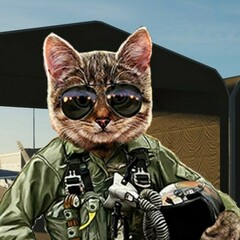

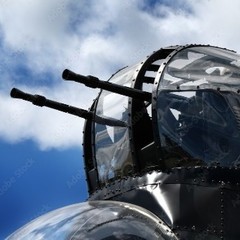

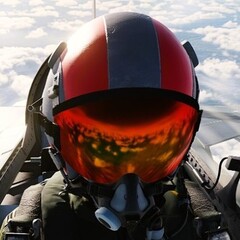


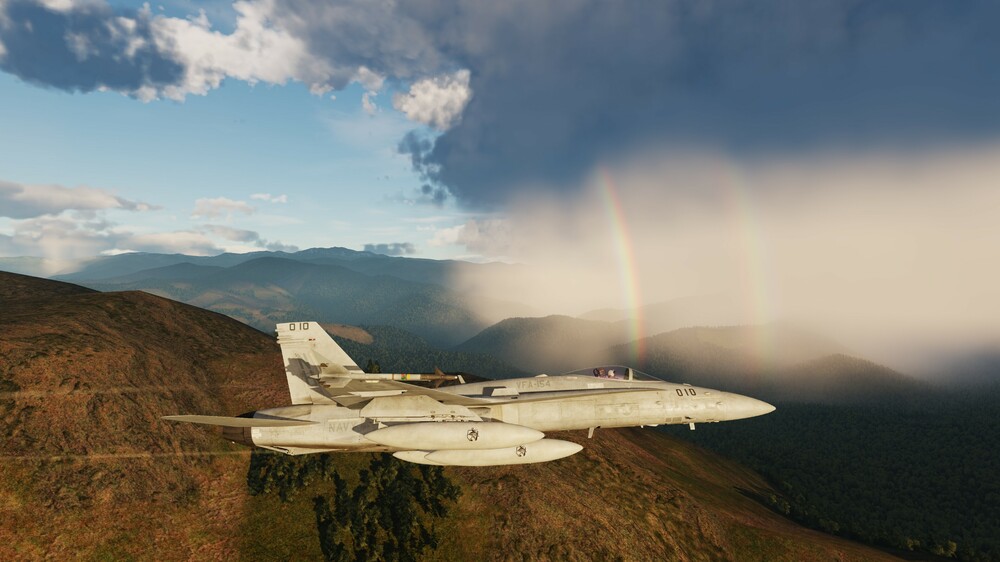

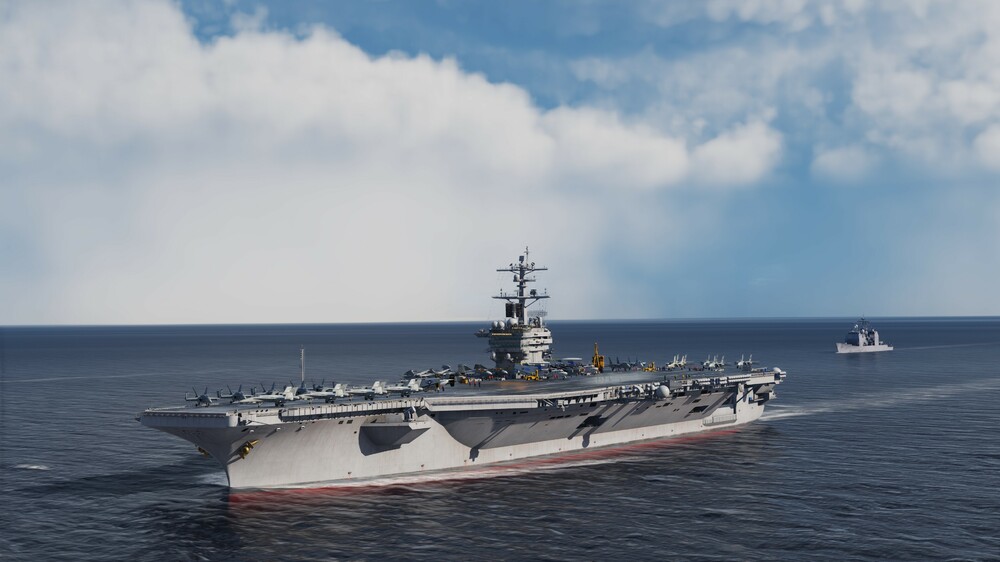
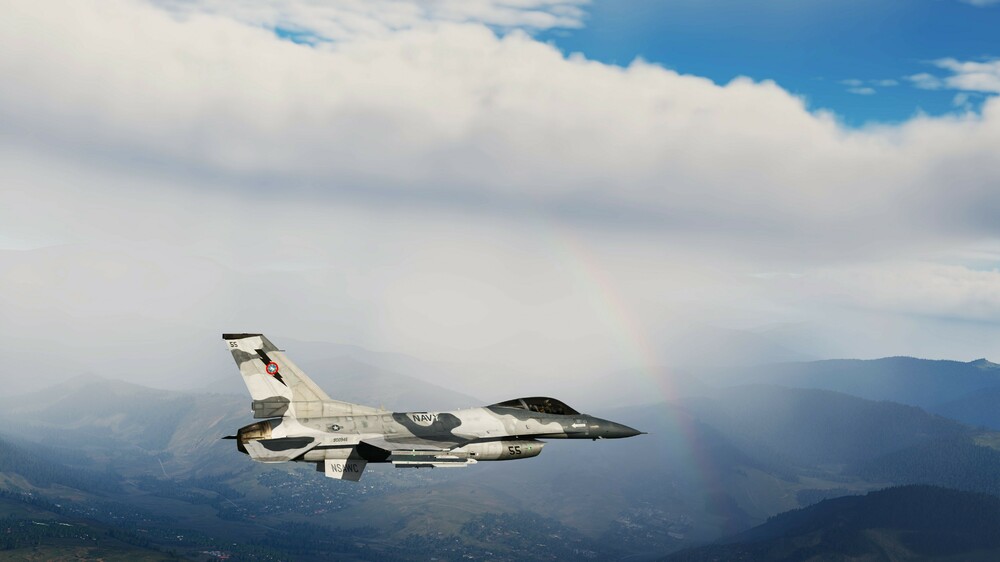
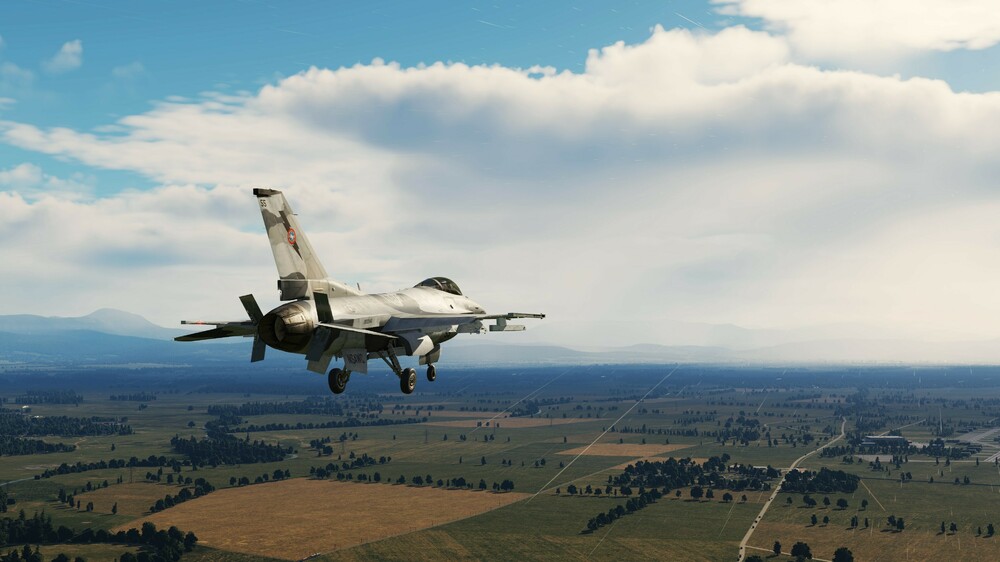
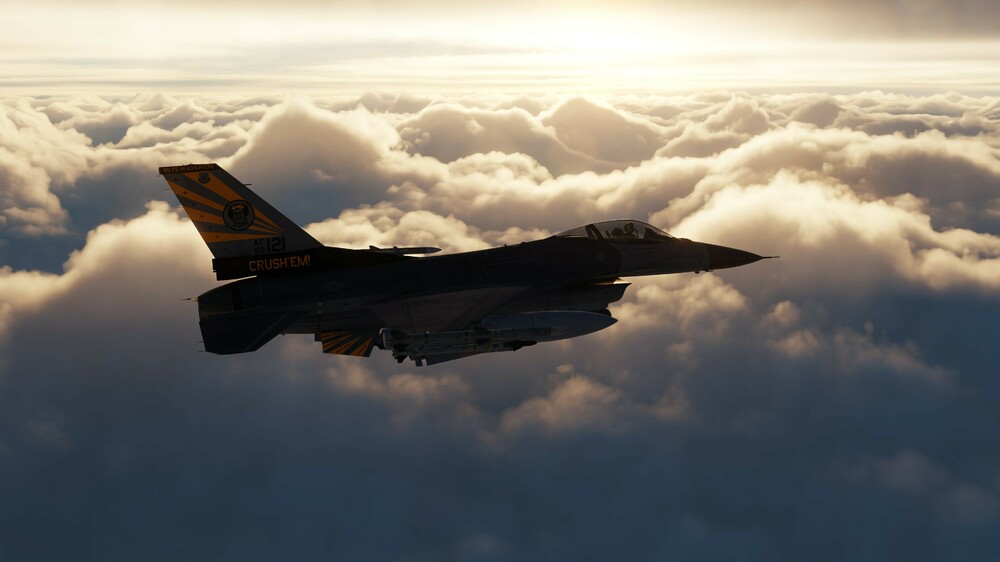
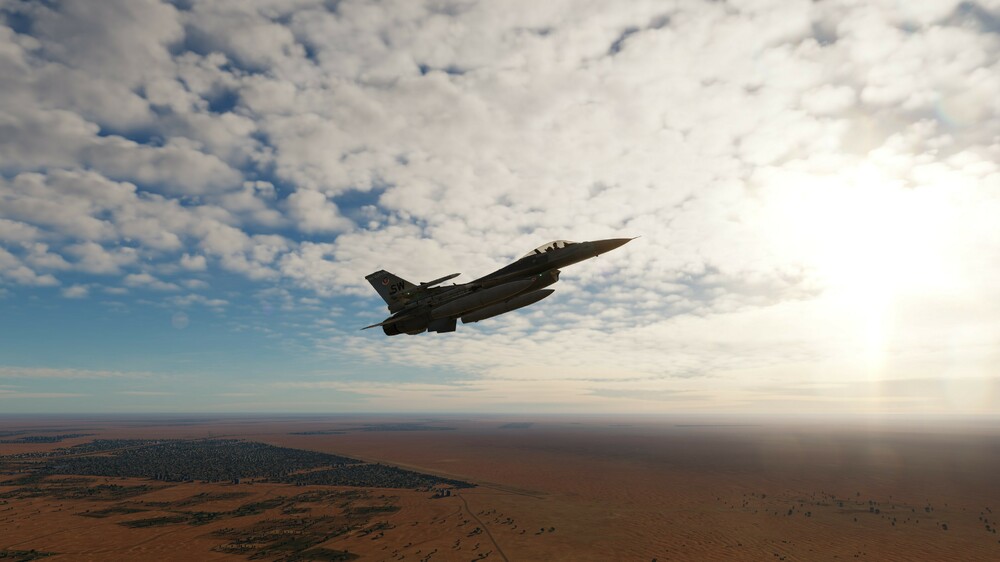
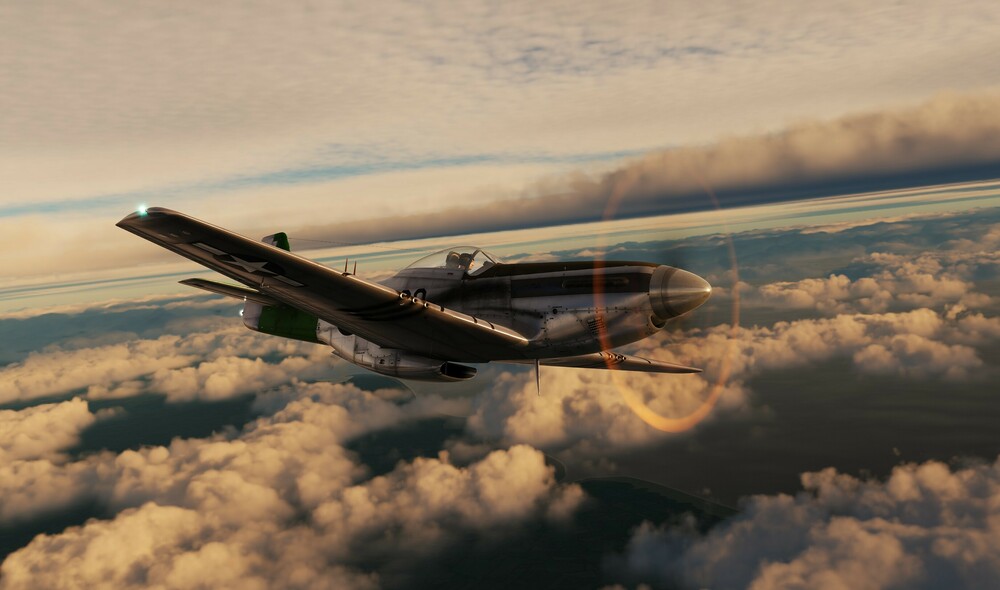
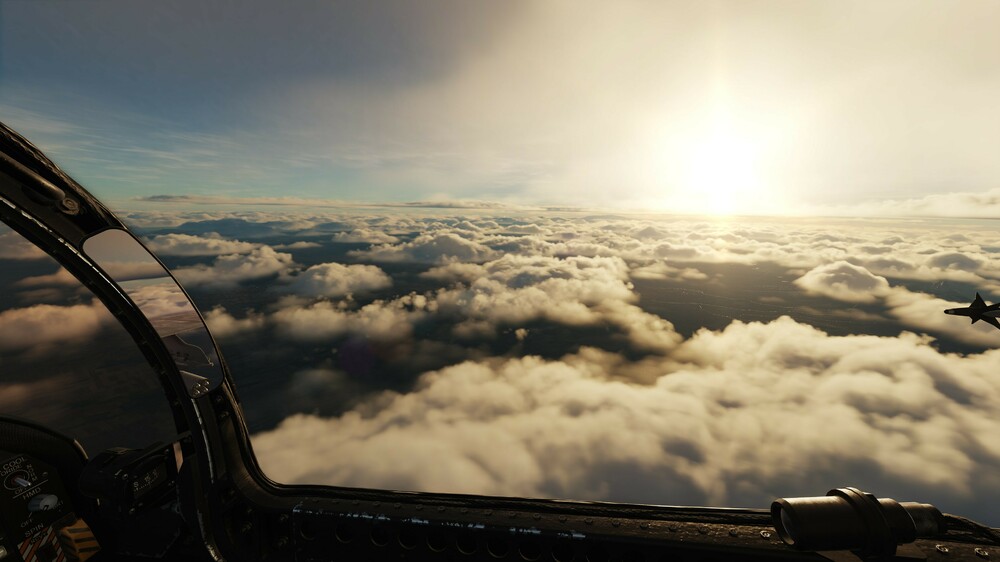
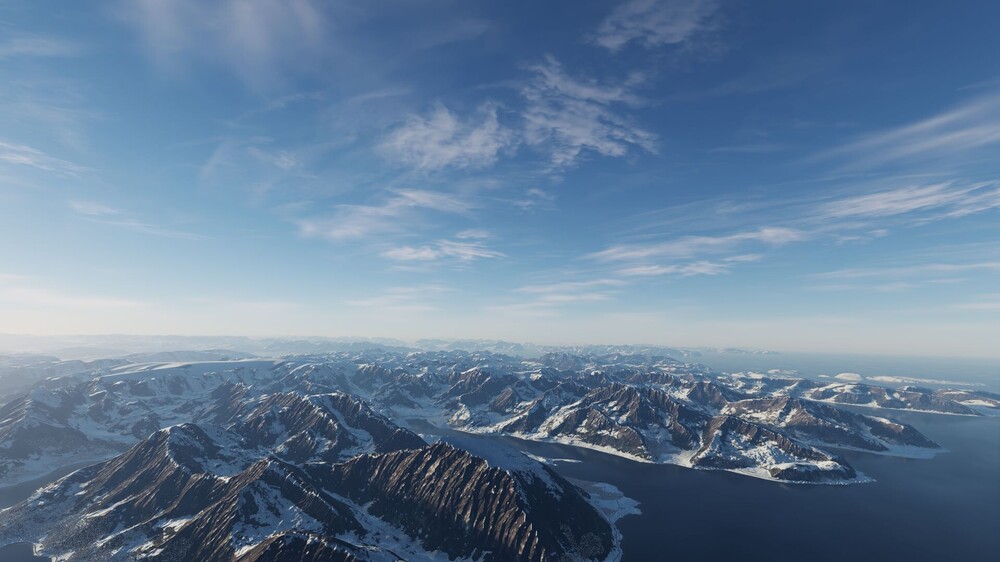


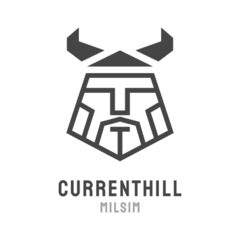
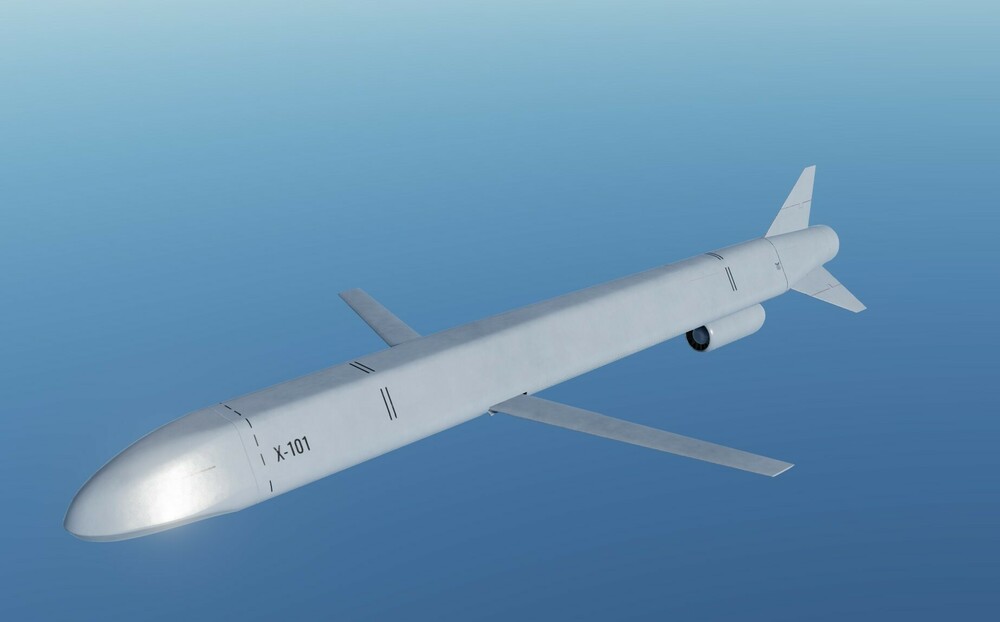

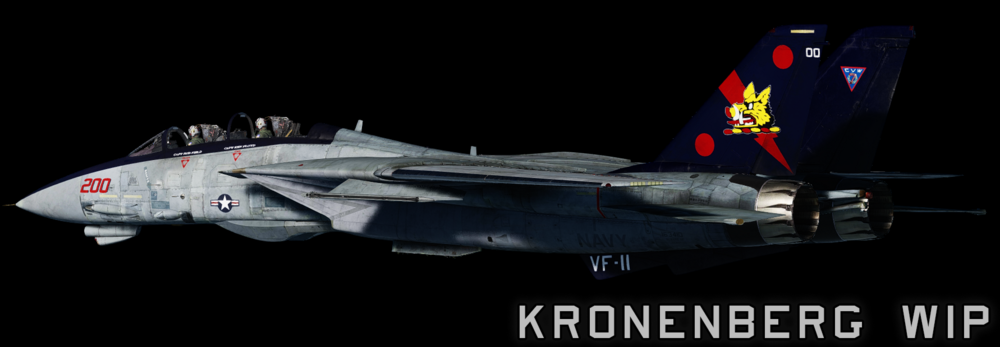

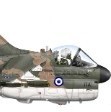

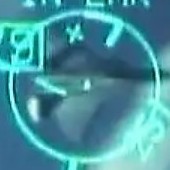
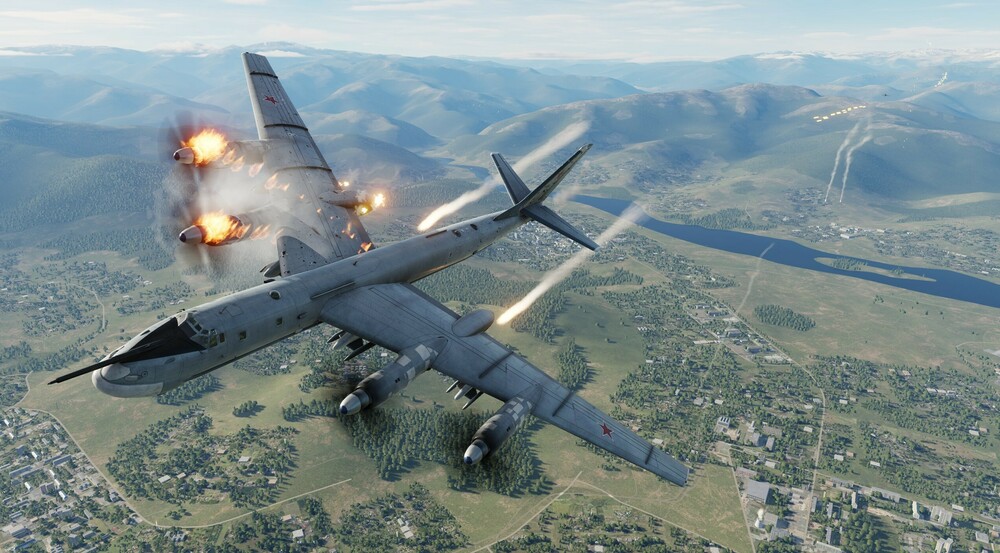
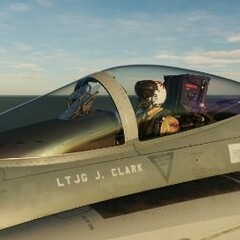
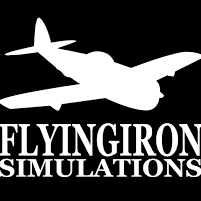
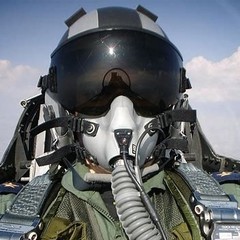
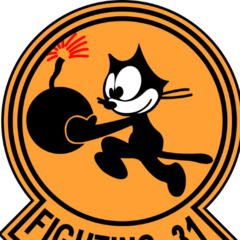

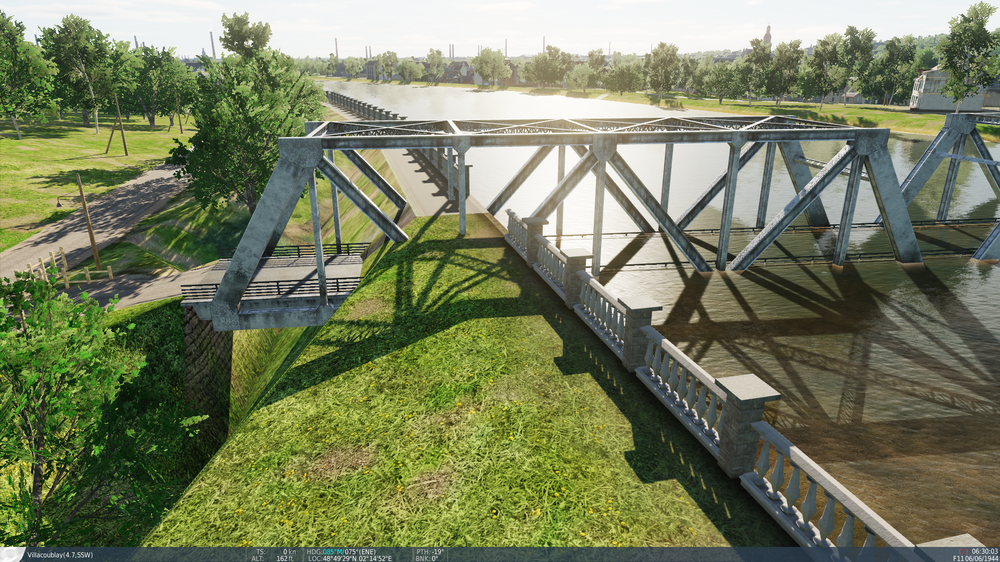

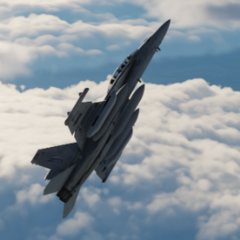


.thumb.jpg.f0ca2f0d5599d02087482465751e4237.jpg)

